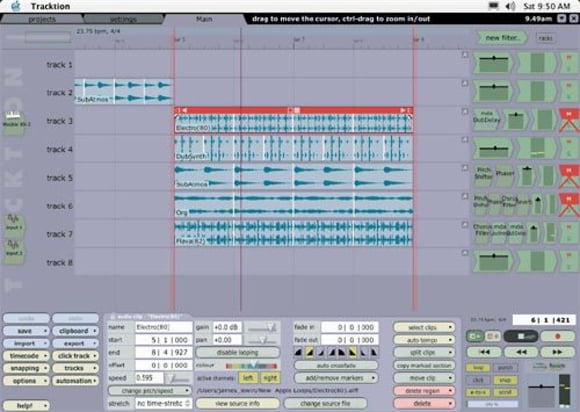7. The Main Programs
For many years, the two big players in the software sequencing market at least as far as Europe goes - were the originals: Emagics Logic and Steinbergs Cubase. Although Emagic is now owned by Apple, they are both still going strong, and have now been joined by two offerings from the USA: Twelve Tones Cakewalk sequencing software was the first successful Windows based sequencer (always popular in the States), which has since evolved along with their name into Cakewalks Sonar, and Digidesigns Pro Tools which comes from the audio side of recording and has only fairly recently added professional level MIDI sequencing. Although not very popular outside the America, MOTUs Digital Performer is also a very credible program.
At a broad level, these five software recording studios offer essentially the same facilities. They are very similar in layout, features and workflow, and choosing which is best for you will often come down to whose style of presentation you prefer, or which one your best mate uses so they can help you if you get stuck! The upside is that whichever one you choose, you can rest assured that it will do a good job of all the processes we have described in this article. There are a few caveats however - Logic now only runs on Apple Mac computers, Sonar only runs on Windows, and Pro Tools only works with Digidesigns own audio interfaces, or those of M-Audio in the case of the junior Pro Tools M-Powered version.
In recent years theres been a healthy rebellion against the perceived monopoly of the big names, and some strong alternatives have emerged. Propellerheads Reason is a great way to get into software sequencing, offering an analogue based method of working, although it also contains the usual MIDI editing features of piano-roll and automation. Abletons Live on the other hand approaches sequencing from the angle of looping and performance. Originally based purely on audio loops, it allows you to stack them up for triggering in groups, switching between verses and choruses with a single click, making it a very intuitive jamming and improvisational tool. As its potential was realised, MIDI was bolted on, and it now includes the same sort of audio/MIDI recording as the traditional programs, while maintaining a heavy bent towards performance. Lastly, another program, Tracktion, now owned by Mackie, was reportedly originally written by a lone programmer, fed up and frustrated with the way that Cubase et al worked, who set out to create a working recording studio that was easier to use and a good deal cheaper if you dont consider yourself likely to become a power user, you may well find that this will cover all your needs.

Tracktion



